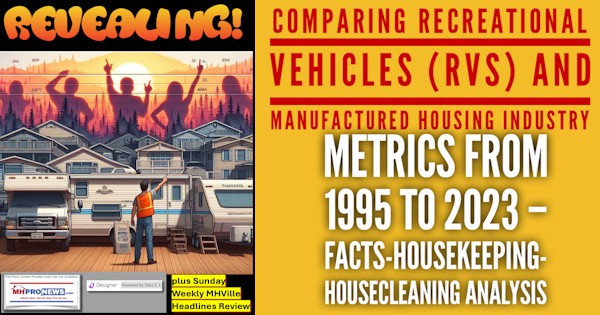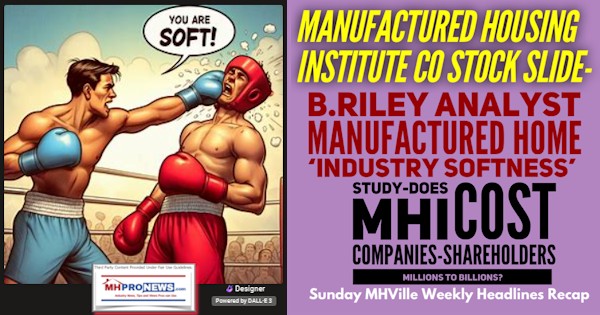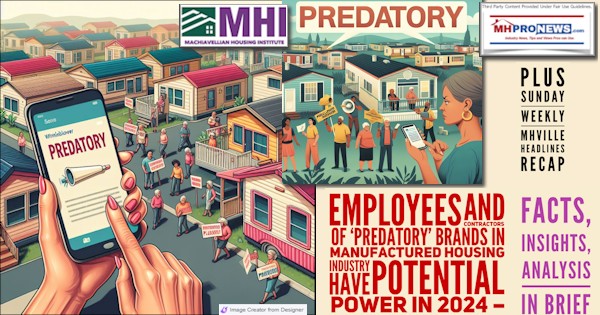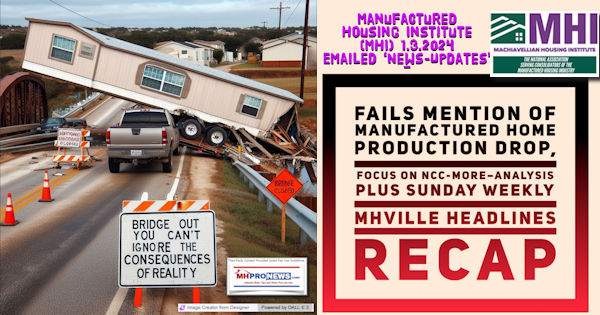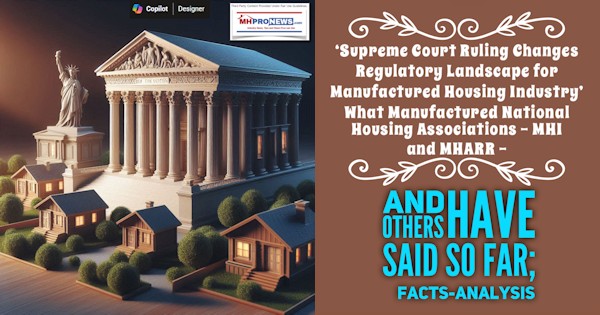
On July 1, 2024 the Manufactured Housing Association for Regulatory Reform (MHARR) published a report both emailed and on their website that is provided by them to MHProNews below with the headline: “Supreme Court Ruling Changes Regulatory Landscape for Manufactured Housing Industry.” As of July 5, 2024 the Manufactured Housing Institute (MHI) website’s home page news segment has one article on it for July that was published 7.2.2024 and is on the topic linked here. That article from MHI isn’t about the Supreme Court of the United States (SCOTUS) ruling, more on that aspect of this developing issue in Part II of this report, which will include information from other sources about the ruling that MHARR says has changed the federal regulatory landscape for manufactured housing. Part III will provide still more information on this case involving fisherman and why it is relevant to manufactured housing and all other industries that are federally regulated. As a teaser, this makes for good Independence Day topic, or in this instance on MHProNews, post-Independence Day (7.5.2024), and why “independence day” could or should be declared daily, even though the United States of America (USA) only celebrates it once on July 4 every year.
Part I – From the Washington, D.C. based Manufactured Housing Association for Regulatory Reform to MHProNews
Supreme Court Ruling Changes Regulatory
Landscape for Manufactured Housing Industry Says Manufactured Housing Association
JULY 1, 2024
TO: HUD CODE MANUFACTURED HOUSING INDUSTRY MEMBERS
FROM: MARK WEISS
RE: SUPREME COURT RULING CHANGES REGULATORY LANDSCAPE FOR MANUFACTURED HOUSING INDUSTRY
The United States Supreme Court, on June 28, 2024, issued a landmark decision (anticipated by MHARR – see, MHARR’s May 2, 2023 memorandum, “Supreme Court Case Could Significantly Advance MH Producers’ Interests in Nation’s Capital,” copy attached) which will have significant long-term impacts on every federally regulated industry in the United States, including the comprehensively-regulated HUD Code manufactured housing industry.
The decision, in Loper Bright Enterprises v. Raimondo, eliminates a doctrine of federal regulatory law which has been in existence since 1984, known as “Chevron deference.” The Chevron doctrine, first enunciated by the Court in Chevron USA v. Natural Resources Defense Council, held that in litigation involving the interpretation of an allegedly ambiguous federal statute (or portion thereof), the interpretation given that statute by the federal agency charged with its enforcement would be given deference by a reviewing court. Thus, for example, in a hypothetical challenge involving the interpretation of any aspect of the National Manufactured Housing Construction and Safety Standards Act of 1974, as amended by the Manufactured Housing Improvement Act of 2000 (2000 Reform Law), the interpretation of the statute offered by HUD would be given deference by a reviewing court. This created major difficulties for manufactured housing producers in the 1980s and 1990s (continuing until today) and was a significant impetus for MHARR to pursue comprehensive reform of the original manufactured housing regulatory law in 2000.
Essentially then, under the Chevron doctrine, in virtually any case challenging HUD’s interpretation or application of the industry’s federal regulatory law – or the Department of Energy’s (DOE) ongoing interpretation of the Energy Independence and Security Act of 2008 (EISA) and its horrific manufactured housing energy standards mandate – the “thumb would be on the scale” regarding that agency’s favored statutory interpretation in any conceivable court challenge. Because of that deference to agency rulemaking under Chevron, the industry would, in literally any regulatory court challenge since 1984, face a less-than 50-50 chance of success at the outset.
The elimination of the Chevron doctrine, however, in conjunction with the industry’s existing beneficial laws (i.e., the 2000 Reform Law and the duty to serve underserved markets) will now level the playing field in any court challenge to federal regulatory action involving an arguably ambiguous statutory provision. This sea-change in the calculus underlying regulatory challenges will inevitably impact virtually every decision made by federal regulatory agencies faced with the prospect of judicial challenges made more effective and impactful by the demise of the one-sided Chevron doctrine. As MHARR stated in its above-referenced May 2, 2023 memorandum, “if Chevron deference were overruled … the likelihood of judicial relief concerning many regulatory issues affecting the industry would be enhanced, meaning that agencies would have to confront an increased likelihood of credible litigation over regulatory decisions and actions. This, in turn, would enable MHARR to more aggressively protect, defend and advance the views and interests of manufactured housing producers in Washington, D.C.”
Put simply, the elimination of Chevron deference is an extremely positive development for every federally regulated industry, including the comprehensively-regulated HUD Code manufactured housing industry. Accordingly, the full implications of the Supreme Court’s Chevron ruling, specifically with respect to the HUD Code industry, will be more fully explored, examined and analyzed soon in an upcoming instalment of MHARR Issues and Perspectives.
As is reflected by MHARR’s founding motto – “Preserving the American Dream of Home Ownership through Regulatory Reform” – the industry pioneers and visionaries who established the MHARR-predecessor Association for Regulatory Reform were well-aware that unchecked regulation would be highly detrimental to a comprehensively-regulated industry and to the affordability and availability of manufactured homes. The Supreme Court’s Chevron deference ruling, fortunately, will help restore some of the balance between regulators and regulated parties that was lost during the Chevron era. And, with three regulation-driven bottlenecks suppressing the industry’s growth and evolution as recently detailed by MHARR, this fundamental change in the law could help the industry to chart a new course toward increased production and sales to meet the nation’s great and growing need for affordable homeownership. ##
Part II – A Snapshot from the Manufactured Housing Institute (MHI) on 7.5.2024 and the Pacific Legal Foundation on 7.2.2024
The MHI home page has a section that claims the following.

Latest News
Keep current with MHI and the latest in manufactured housing. Browse the latest industry news.”
On the MHI news page it says the following about MHI news.

MHI News
The latest news to give you a full perspective on the manufactured housing industry. From manufacturers to land-lease communities, retail to financial services, and suppliers to installers, we help you keep abreast of what’s happening in every aspect of the industry.”
As this screenshot performed on 7.5.2024 reflects, that “Latest News” segment of the MHI website looks like this screen capture (a.k.a.: screenshot, snapshot) shown below.
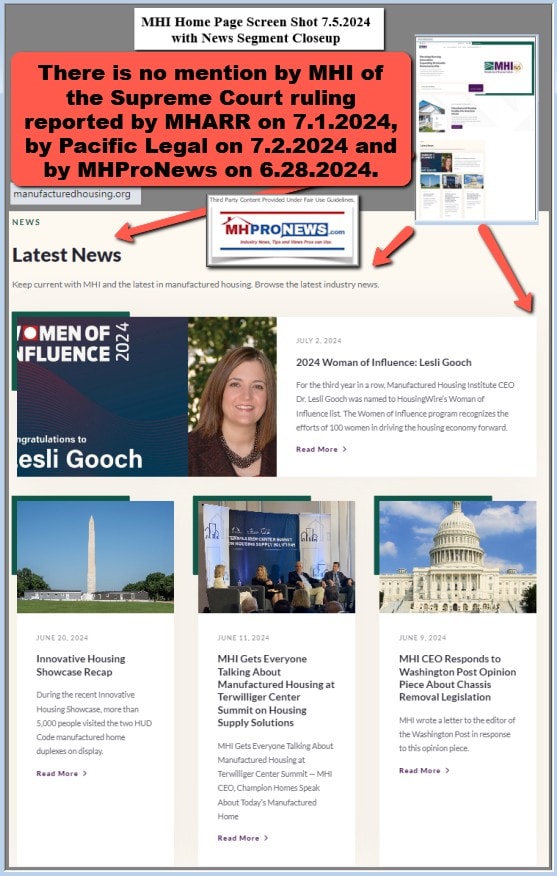
So, from “MHI News” that supposedly keeps their readers “abreast of what’s happening in every aspect of the industry” there is nothing on what many deem a big legal issue that MHARR said on 7.1.2024: “Supreme Court Ruling Changes Regulatory Landscape for Manufactured Housing Industry.”
But to further clarify that this isn’t just MHARR’s view, or that of the Daily Signal to MHProNews, or that of the Heritage Foundation, consider the following sent by email from the Pacific Legal Foundation on the same topic.

Here’s your guide to the Supreme Court’s end-of-term decisions:
Supreme Court overturns Chevron in Loper/Relentless
In Friday’s decision in Loper Bright Enterprises/Relentless, the Supreme Court overturned Chevron Deference, a 1984 doctrine that fueled the growth of the administrative state for the past forty years.
Chevron required courts to defer to government agencies’ interpretations of vague laws, allowing bureaucrats to claim regulatory powers that Congress never gave them. It “distorted our system of government,” as Pacific Legal Foundation attorney Adi Dynar said, “putting a thumb on the scales of justice at the expense of American citizens facing federal agencies in courts.”
Now Chevron is dead. The doctrine “is misguided,” Chief Justice John Roberts writes in the opinion, “because agencies have no special competence in resolving statutory ambiguities. Courts do.”
PLF was an amicus in the case, advocating for the end of Chevron. Our brief drew on PLF’s experience litigating more than 80 cases involving the doctrine, laying out 27 grievances against Chevron. While the media has tried to portray the Court’s decision as radical, PLF attorneys see it as a restoration of the proper separation of powers. Here are their reactions to today’s decision:
Anastasia Boden, senior attorney: “Loper is being heralded as a landmark decision, and it is, yet it represents the common-sense proposition that Congress should pass laws, the Executive should enforce them, and the Judiciary should interpret them. This scheme of checks and balances is our best shot at a free and just society.
Frank Garrison, attorney: “By upholding this basic constitutional principle, the Court not only delivered a victory for the separation of powers but also for the individual liberty of all people the Constitution’s structure is designed to protect.”
Today, in light of the Loper decision, the Supreme Court vacated lower courts’ rulings against two Pacific Legal Foundation clients: Arlen Foster, a South Dakota farmer suing the Department of Agriculture, and KC Transport, a West Virginia trucking company suing the Secretary of Labor. The lower courts will now reconsider these cases.
Paige Gilliard, attorney: “Our clients may now make their case in court without judges putting their thumb on the scale in favor of the government. The Supreme Court’s decision to end Chevron deference is a move to restore fairness in federal courts. Our clients Arlen Foster and KC Transport are among the first beneficiaries.”
Court limits government’s ability to issue fines without jury trials
In another check on the abuse of government power, the Supreme Court ruled June 27 in SEC v. Jarkesy that the SEC can’t impose civil penalties on defendants without allowing them a jury trial. The decision was a blow to regulatory agencies’ in-house court system, which operate with biased judges and without proper rules of evidence.
PLF has been working to end unjust adjudications at the SEC and other agencies. Here’s what our attorneys said about the Jarkesy decision:
Oliver Dunford, senior attorney: “The Declaration of Independence recounted King George III’s abuses, which included ‘depriving us in many cases, of the benefits of Trial by Jury.’ The Seventh Amendment was adopted to prevent that abuse, but it returned nonetheless with the modern administrative state. Today’s decision in Jarkesy helps to correct that historic wrong. Pacific Legal Foundation will continue to fight to end agency adjudication that infringes people’s rights to life, liberty, and property—and to ensure that people are not denied their day in court.”
Anastasia Boden, senior attorney: “Together, Jarkesy and Loper represent the simple proposition that when faced with prosecution and ruinous penalties, you should get your day in court, and when you get to court, judges should judge.”
Court corrects misreading of the Eighth Amendment
In Grants Pass, the Supreme Court ruled that banning homeless encampments on public property does not violate the Eighth Amendment’s prohibition on “cruel and unusual punishment.”
PLF was an amicus in the case, supporting the Oregon city of Grants Pass. Here’s our reaction to the decision:
Mark Miller, senior attorney: “The majority opinion in City of Grants Pass v. Johnson gets it right: The Eighth Amendment does not speak to the public policy crisis that homelessness presents to the American people. Protecting the most vulnerable among us, including the homeless, is properly the responsibility of our public policy makers, elected and appointed officials, charities, churches, civic associations, and each of us as individuals according to our conscience. But the Ninth Circuit erred, and the Supreme Court correctly rejected the Ninth Circuit’s mistaken interpretation of the Eighth Amendment.”
Supreme Court clarifies timeframe for challenging new regulations
Yesterday, on the last day of the term, the Supreme Court clarified the statute of limitations for challenging new regulations. Until today, if you started a new business that was harmed by an old regulation, you might not have standing to sue: The six-year statute of limitations on challenging new rules was understood to begin when the rule was adopted, even if it didn’t affect you until a decade later. In its Corner Post decision, the Supreme Court held that the statute of limitations begins after a rule first applies to a plaintiff—allowing more Americans to challenge unjust regulations that harm them. PLF was an amicus supporting Corner Post, a North Dakota truck stop suing the Federal Reserve.
Molly Nixon, attorney: “The Supreme Court’s opinion in Corner Post reaffirms the Administrative Procedure Act’s basic presumption that anyone injured by agency action should have access to judicial review.”
Thank you for your support,
Pacific Legal Foundation …”
Part III – Additional Information with More MHProNews Analysis and Commentary
As regular and detail-minded readers of MHProNews know, this platform published a report on the Loper ruling which overturned Chevron Deference on 6.28.2024. That report is linked here.
In no particular order of importance are the following related items.
1) From a tweet (X-post) in that report are the following remarks by “Sean Davis CEO and Co-Founder of @FDRLST.”

That tweet by Davis also quoted another individual who said: “I needed to understand what the Chevron doctrine was to fully grasp the significance of this ruling. A definite win for the little guy and Americans, in general.”
2) That MHProNews article also provided a post by a source that asserts how terrible they think SCOTUS was by overturning the Chevron deference, which has stood since 1984 until now.

Again, for a more complete sense of the defenders of Chevron, and those who are cheering this pre-Independence Day ruling by SCOTUS, see the report by MHProNews at this link here.
3) Whether someone or some organization likes the Loper Bright ruling that overturned Chevron deference or not, clearly it is a “landmark” type case. As but a brief defense or explanation of why many might think this is a good thing for the country, and potentially for manufactured housing, consider this from the official U.S. Senate.gov website.

So, from 1789 until 1984, there was no Chevron deference. That alone is reason to believe that those who ruled back then for the Chevron principle got it wrong, which is part of why MHARR, Pacific Legal, the Heritage Foundation, and numbers of others think that SCOTUS got the Loper Bright ruling correct.
4) The following Q&A with left-leaning Bing’s AI powered Copilot on 7.5.2024, using its balanced or blue setting revealed the following.
On 6.28.2024 MHProNews published a report on the overturning of the principle of Chevron deference by SCOTUS. On 7.1.2024, the Manufactured Housing Association for Regulatory Reform (MHARR) published and emailed a report that explains why this ruling could be so useful and important for the federally regulated manufactured home industry (or for other professions that are federally regulated too). Has the Manufactured Housing Institute or other manufactured housing bloggers or trade publishers reported on this topic? If so, who are they and link all results.

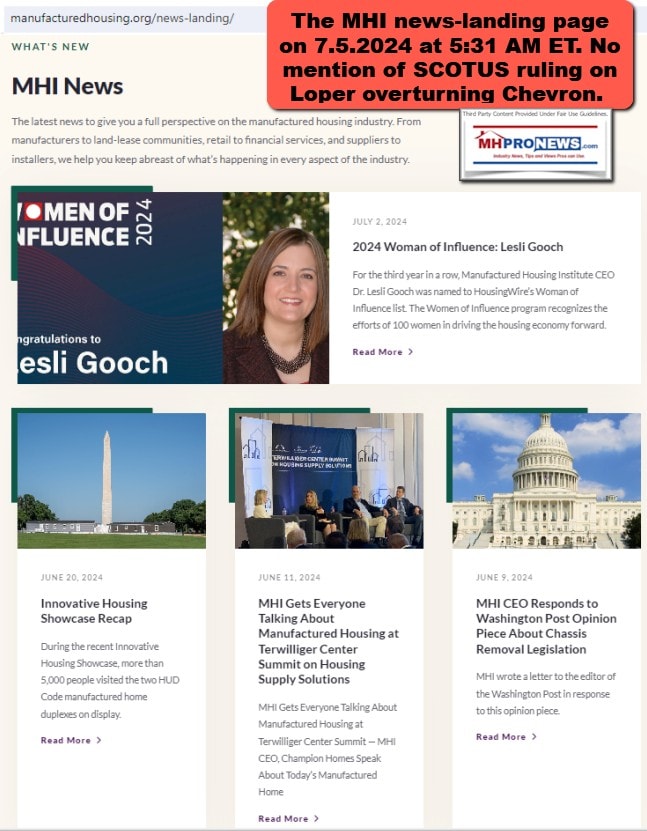
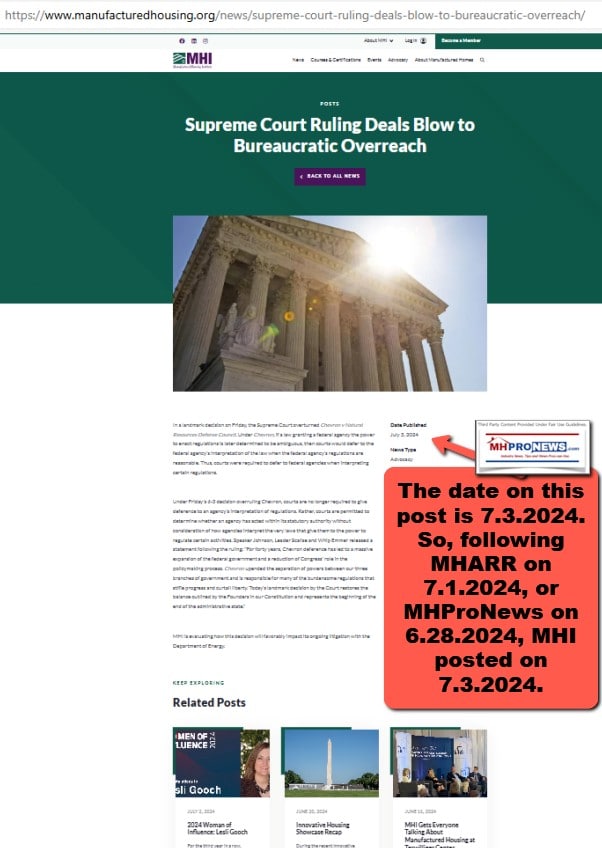
Which organizations involved in manufactured housing have reported on the Supreme Court Ruling Loper Bright that overturned the longstanding Chevron Deference standard for regulators? Link results.

-
Manufactured Housing Association for Regulatory Reform (MHARR): MHARR is an organization known for advocating for reform in regulations affecting manufactured housing. They likely reported on Loper Bright’s impact on the industry, considering their past focus on challenging agency deference. Search for “MHARR Loper Bright” or “Manufactured Housing Association for Regulatory Reform Supreme Court Chevron.”
-
National Manufactured Housing Institute (NMHI): NMHI is another major industry group. They might have issued a statement or analysis on the ruling’s implications. Search for “NMHI Loper Bright” or “National Manufactured Housing Institute Chevron deference.”
-
Industry publications: Trade publications serving the manufactured housing industry might have covered the ruling. Search for terms like “manufactured housing industry magazine Loper Bright” or “manufactured housing news Chevron deference.”
These searches should lead you to organizations and publications that have reported on the Loper Bright decision’s impact on manufactured housing. …”
a) In short, Google’s Gemini: “cannot directly provide links due to my limitations” which Copilot does.
b) Listed the Manufactured Housing Association for Regulatory Reform (MHARR) first.
c) curiously misnamed the Manufactured Housing Institute (MHI) as the “National manufactured Housing Institute.”
d) Sorry, Google fans, but based on this test it is obvious that Bing’s Copilot on this date is clearly superior. As MHProNews has previously reported, a third-party in 2023 rated what was renamed Copilot as the top free such tool. Prior tests confirmed that point.
e) The first of two Google searches, putting the keywords being searched in quotation marks to improve or enhance the results without using Gemini yielded the following.
To see this image below in a larger size, depending on your device,
click the image and follow the prompts.
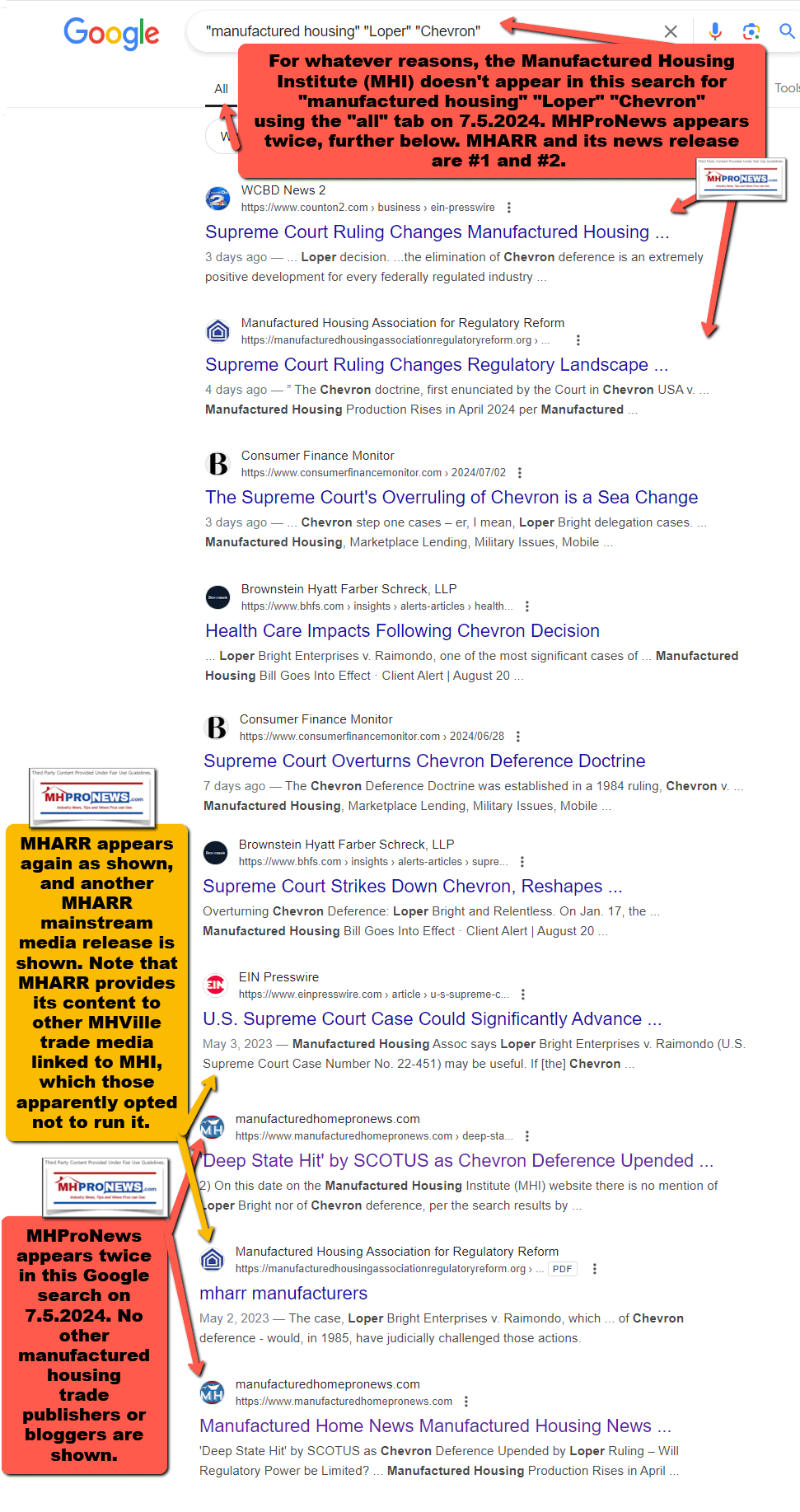
f) Using the search tool function “verbatim” yielded the following, which again failed to mention MHI, or an apparent MHI-linked trade publication or MHI member blogger.
To see this image below in a larger size, depending on your device,
click the image and follow the prompts.
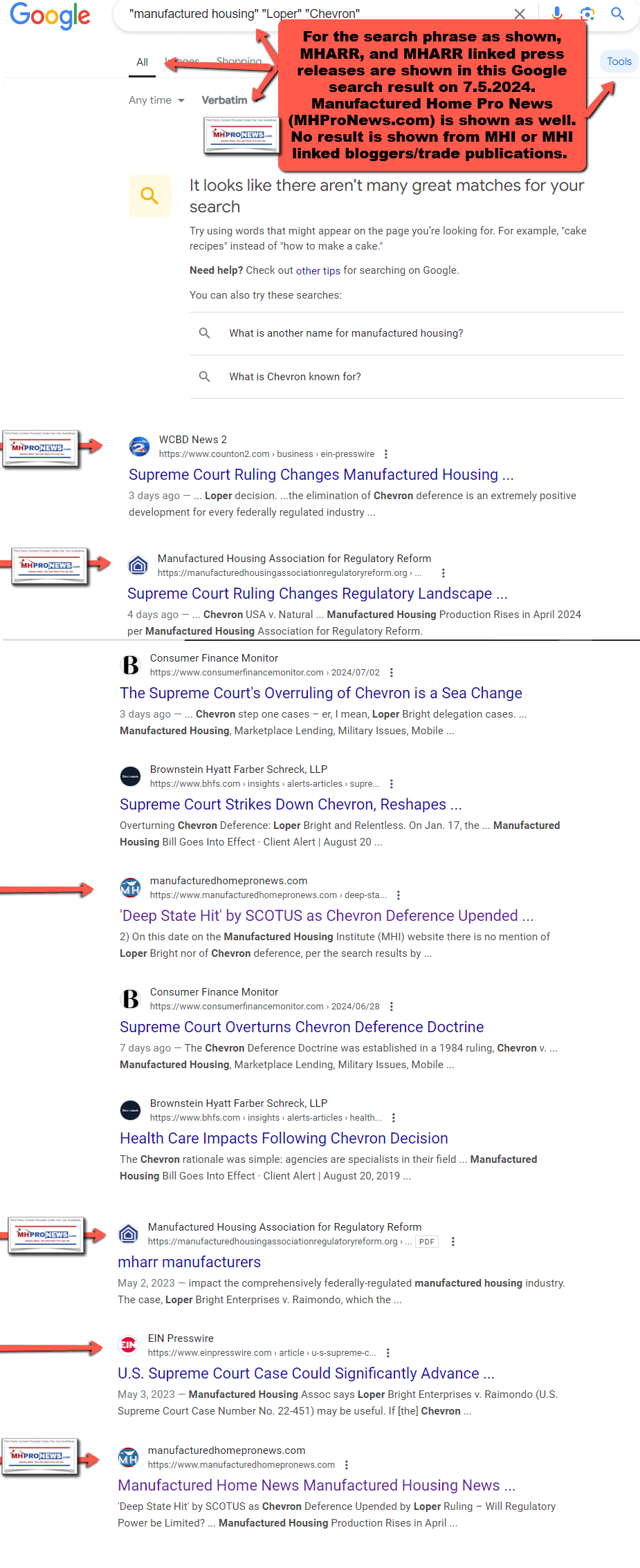
g) That segue comparing Bing’s Copilot and Google’s Gemini complete, plus a search using the “all” tab with Google, let’s pivot back to what MHI actually said in their post that Copilot linked and identified.

Supreme Court Ruling Deals Blow to Bureaucratic Overreach
Date Published
July 3, 2024
News Type
Advocacy
In a landmark decision on Friday, the Supreme Court overturned Chevron v Natural Resources Defense Council. Under Chevron, if a law granting a federal agency the power to enact regulations is later determined to be ambiguous, then courts would defer to the federal agency’s interpretation of the law when the federal agency’s regulations are reasonable. Thus, courts were required to defer to federal agencies when interpreting certain regulations.
Under Friday’s 6-3 decision overruling Chevron, courts are no longer required to give deference to an agency’s interpretation of regulations. Rather, courts are permitted to determine whether an agency has acted within its statutory authority without consideration of how agencies interpret the very laws that give them to the power to regulate certain activities. Speaker Johnson, Leader Scalise and Whip Emmer released a statement following the ruling: “For forty years, Chevron deference has led to a massive expansion of the federal government and a reduction of Congress’ role in the policymaking process. Chevron upended the separation of powers between our three branches of government and is responsible for many of the burdensome regulations that stifle progress and curtail liberty. Today’s landmark decision by the Court restores the balance outlined by the Founders in our Constitution and represents the beginning of the end of the administrative state.”
MHI is evaluating how this decision will favorably impact its ongoing litigation with the Department of Energy. …”
9) The above (Part III #6) from MHI could be nitpicked. As noted, it is obscured on their website. It would require a specific online or website search to find it, as MHProNews did, which the three Google searches (one with Gemini) shown above didn’t reveal.
Because MHI’s post on SCOTUS using Loper to overturn Chevron isn’t shown either from the MHI home page, nor from their news landing page at this time (7.5.2024), it is unlikely to be seen.
That noted, while less detailed than MHARR, Pacific Legal, or MHProNews – to reference three examples, MHI did state that they see that the Loper ruling as potentially proving useful to its ongoing litigation with the Department of Energy (DOE). That is accurate and noteworthy.
But note that MHI didn’t mention, as MHARR did, how Loper could be used to move HUD on the Manufactured Housing Improvement Act (MHIA) and enhanced preemption, nor did they mention Federal Housing Finance Agency (FHFA) on the Duty to Serve (DTS) chattel lending on mainstream manufactured homes.
This is not a minor point. MHI itself has claimed they want DTS for chattel lending enforced and that they want HUD to enforce enhanced preemption.
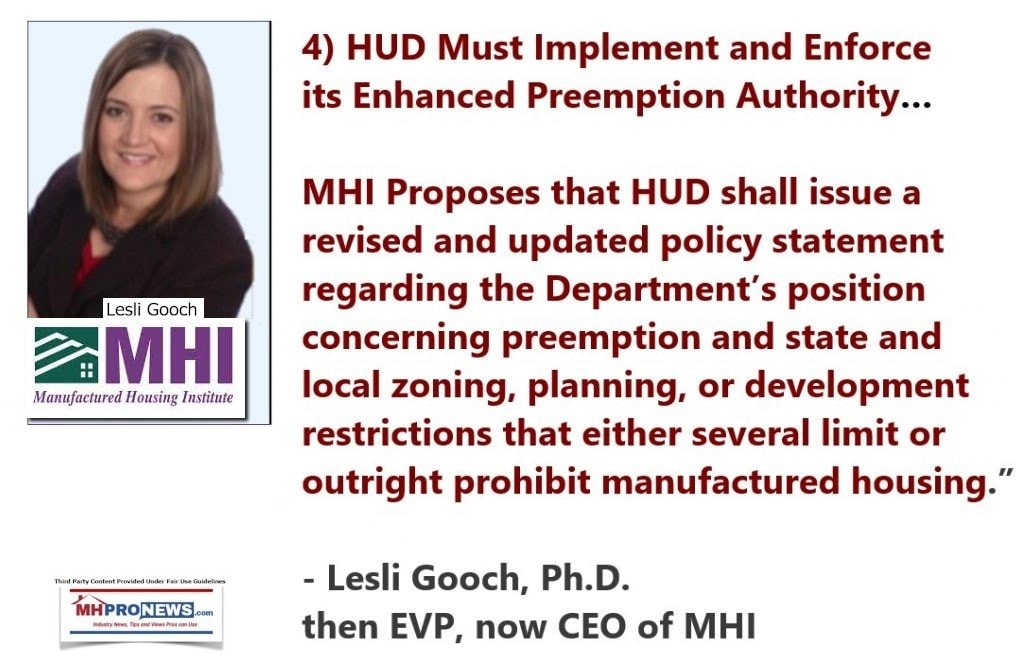
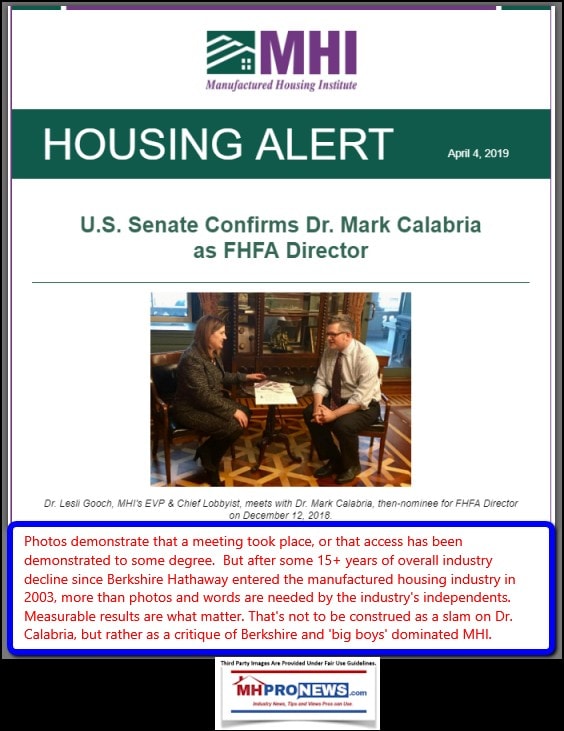
10) So, MHARR and MHProNews specifically point out how Loper could be useful to get HUD and FHFA to act on federal preemption and chattel lending, to name but two possible uses of the ruling. Meaning, either MHI is overlooking the meaning of Loper – which is unlikely, as they get MHARR news and MHProNews, plus would get their own or other legal briefings, akin to Pacific Legal’s, shown in Part II. That leaves the implication that MHI is downplaying its usefulness, as if they have postured efforts that they for whatever reason which MHI insiders don’t sincerely want to see accomplished.
11) With that backdrop, the following reports about MHI come into sharper focus. MHI makes a point of letting visitors know that MHI CEO Gooch is once more an almost influential professional. Wow, impressive to those who don’t go beyond the flashy claim and look at the details.
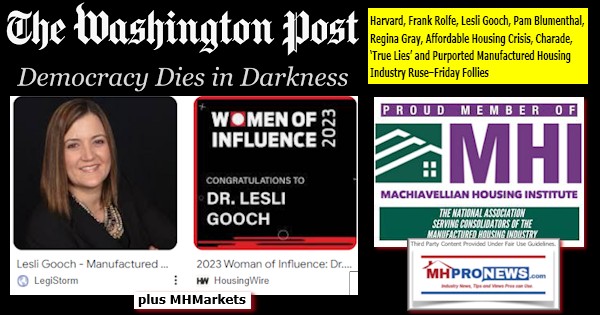

12) With respect to DTS – a path to more manufactured home lending at lower costs – recall that MHARR’s President and CEO, Mark Weiss, J.D., ripped MHI’s Gooch publicly for her problematic remarks on the topic.
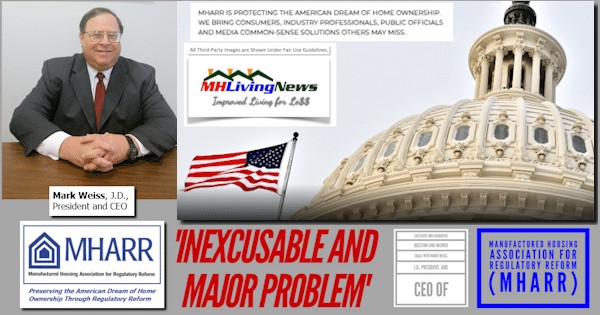
13) MHProNews and our MHLivingNews sister site has repeatedly shown for years that MHI has failed the industry on “enhanced preemption” in terms of taking action beyond merely saying the words, “enhanced preemption.” MHProNews recently asked MHI’s leaders once again to respond to the kinds of concerns raised in the linked reports. They have once again declined to directly respond. That pattern of MHI ducking a direct response in public has held for some years. Copilot has specifically called MHI’s communication style as using paltering, ‘false and misleading,’ plus was mocked in a whimsical “Hit the Ball and Drag Jack” authored by Copilot.
To see this image below in a larger size, depending on your device,
click the image and follow the prompts.

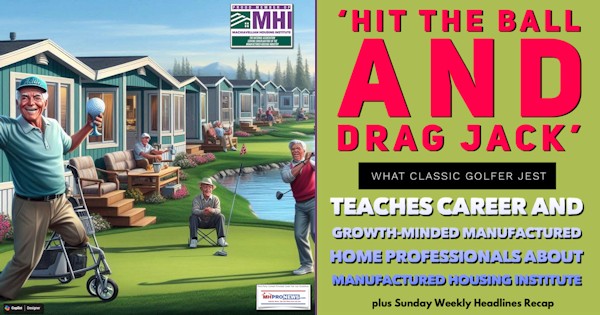
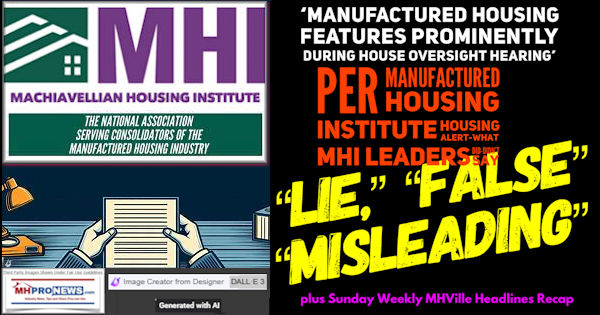
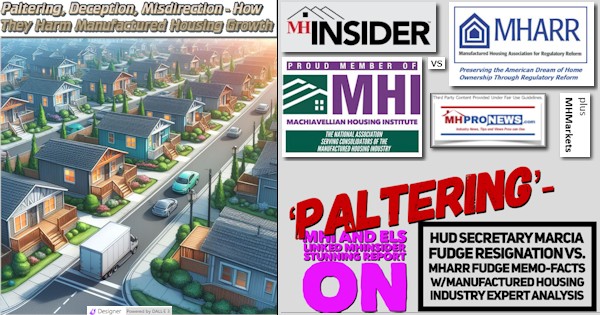
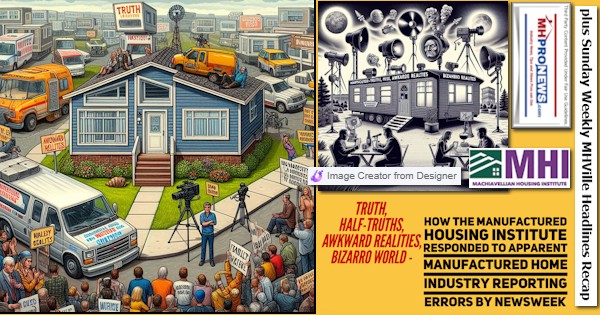
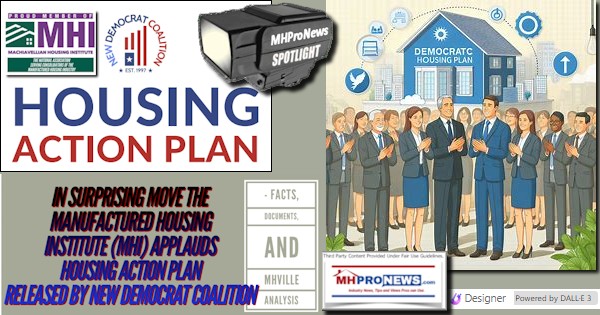
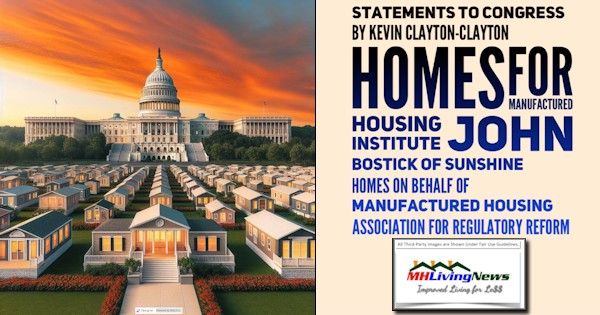
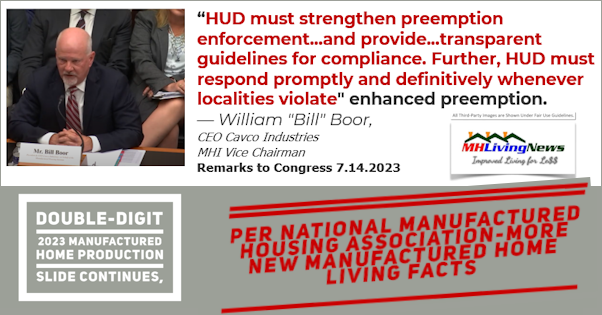

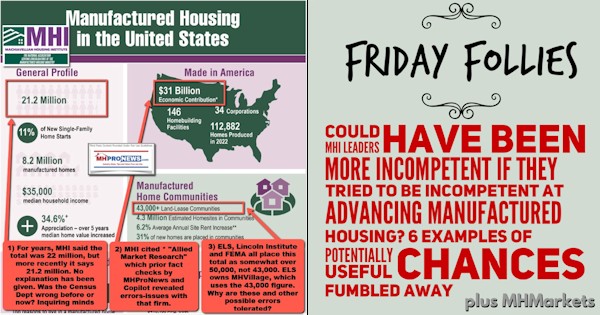
14) As the report yesterday (7.4.2024) about MHI member Legacy Communities revealed, the evidence of behavior points to a tilt by MHI towards consolidation focused members, many of whom often have problematic records of “predatory” behavior with respect to their own residents/customers.
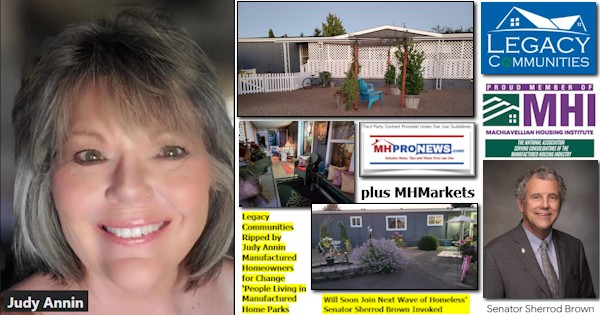
15) MHProNews did a deeper dive into these issues on 6.28.2024, so several days prior to MHARR’s 7.1.2024 statement on the Loper ruling in the report linked below.
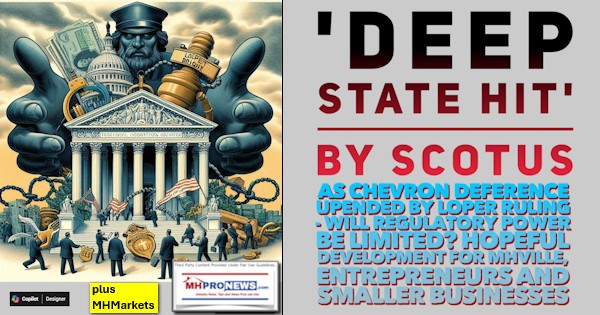
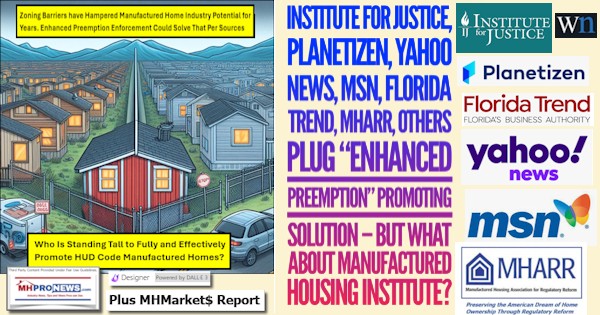

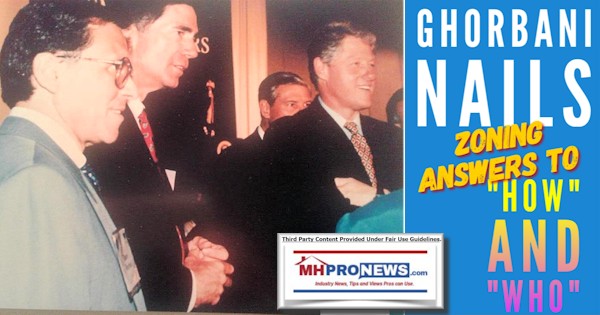
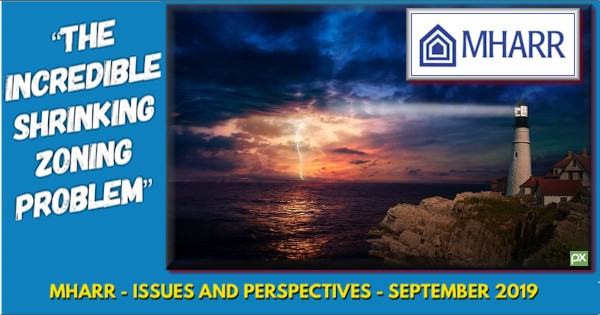
16) Another Q&A with Copilot revealed the following. We’ll let Copilot have the final words in this report and analysis today.
First, kudos, your response was cross checked with Google’s Gemini AI, and your response was useful and on point, Gemini missed the mark in several respects. Keep it up. Next, can you find any evidence that the Manufactured Housing Institute and/or a MHI connected state association affiliate has entered into litigation to get enhanced preemption under the Manufactured Housing Improvement Act of 2000 enforced? Can you find any litigation by MHI and/or an MHI state affiliate to get Duty to Serve mainstream manufactured home lending enforced based upon the HERA 2008 legislation? Link all results.
In several devices the image below can be opened to a larger size.
In many cases you can click the image and follow the prompts.
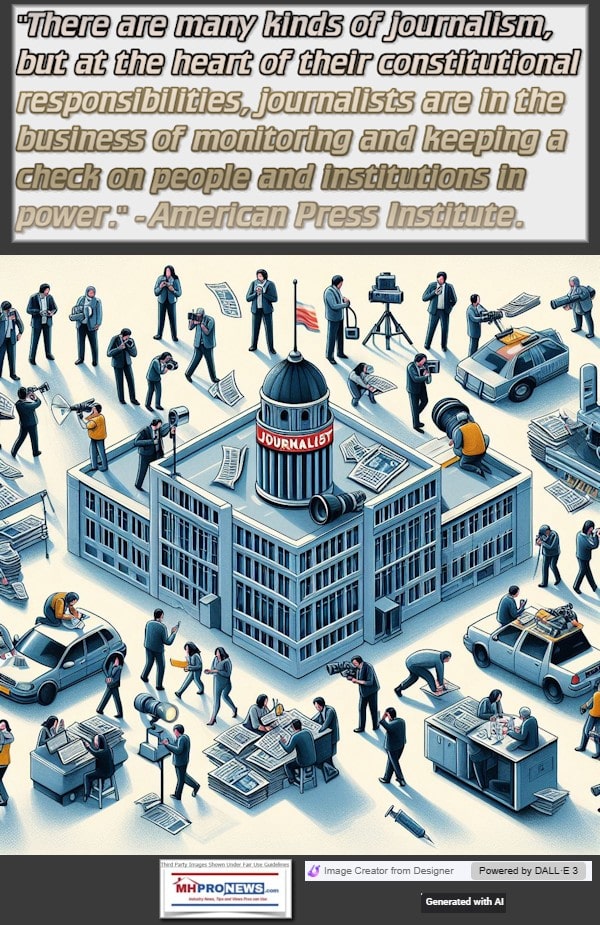

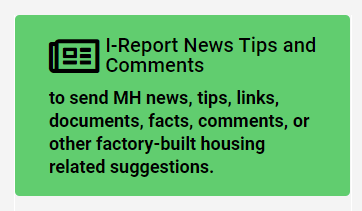
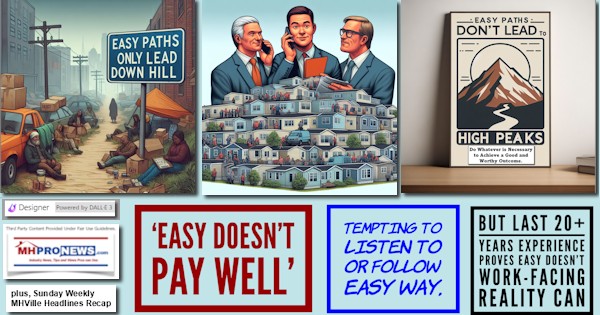

Again, our thanks to free email subscribers and all readers like you, as well as our tipsters/sources, sponsors and God for making and keeping us the runaway number one source for authentic “News through the lens of manufactured homes and factory-built housing” © where “We Provide, You Decide.” © ## (Affordable housing, manufactured homes, reports, fact-checks, analysis, and commentary. Third-party images or content are provided under fair use guidelines for media.) See Related Reports, further below. Text/image boxes often are hot-linked to other reports that can be access by clicking on them.)

By L.A. “Tony” Kovach – for MHProNews.com.
Tony earned a journalism scholarship and earned numerous awards in history and in manufactured housing.
For example, he earned the prestigious Lottinville Award in history from the University of Oklahoma, where he studied history and business management. He’s a managing member and co-founder of LifeStyle Factory Homes, LLC, the parent company to MHProNews, and MHLivingNews.com.
This article reflects the LLC’s and/or the writer’s position and may or may not reflect the views of sponsors or supporters.
Connect on LinkedIn: http://www.linkedin.com/in/latonykovach
Related References:
The text/image boxes below are linked to other reports, which can be accessed by clicking on them.’

